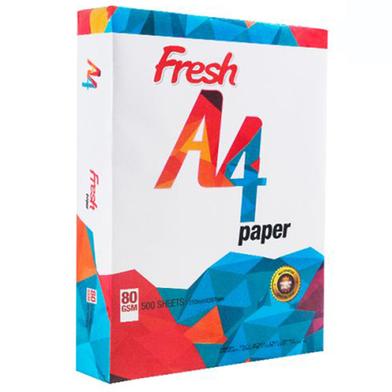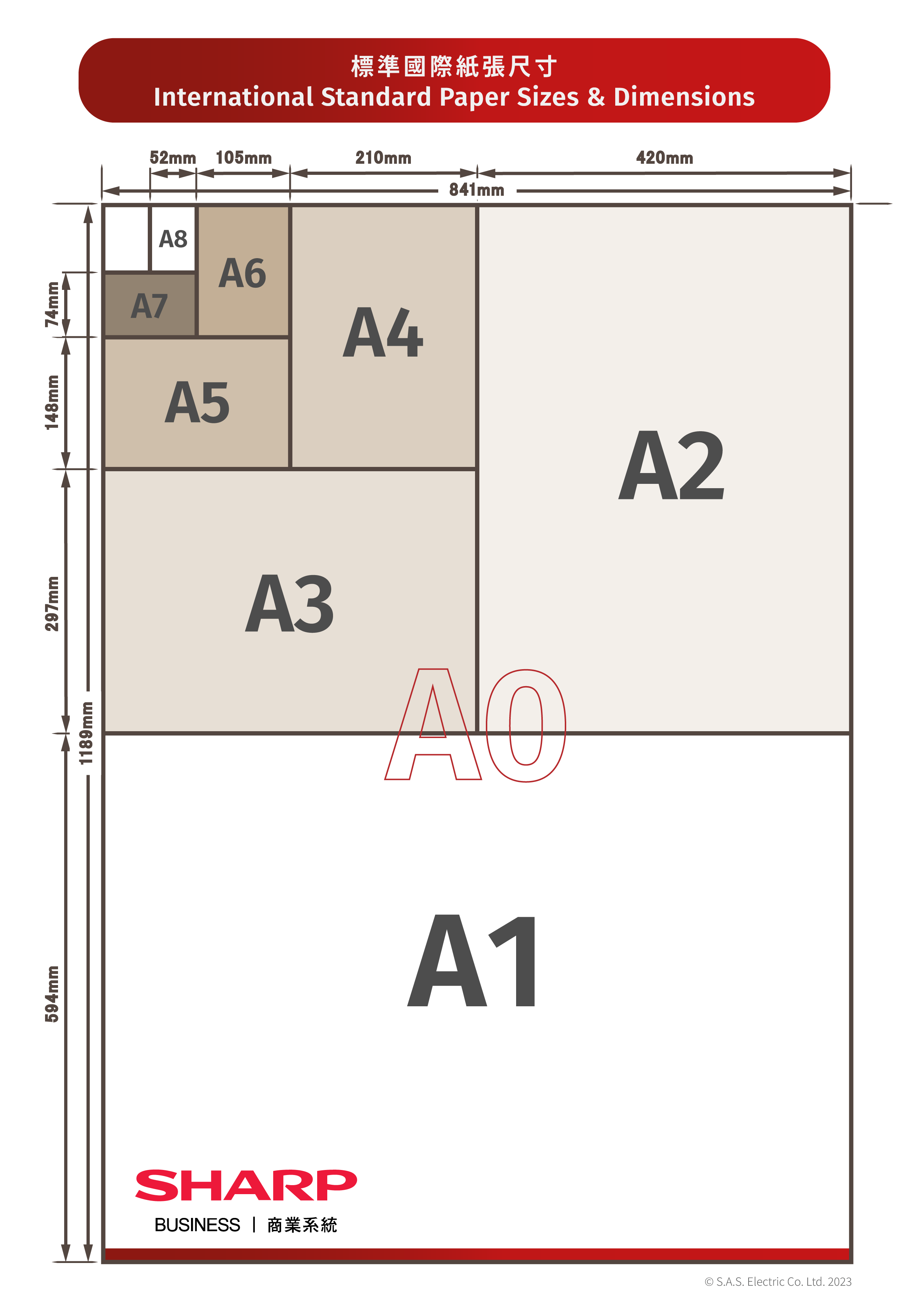Paper is an indispensable material in our daily lives, used for writing, printing, and a myriad of other purposes. Among the numerous paper sizes available, A4 stands out as a ubiquitous standard employed worldwide. This article delves into the captivating world of a4 paper size, exploring its origins, dimensions, and the diverse applications it caters to.
What is A4 Paper?

Understanding A4 Paper Size
A4 paper is part of the A series of paper sizes that are based on an international standard defined by ISO 216. It measures 210 millimeters wide and 297 millimeters long, making it longer and slightly narrower than the US Letter size paper. The aspect ratio of A4 paper is √2 (approximately 1.414), which means that when you cut the paper in half parallel to its shorter sides, you get two sheets with the same proportions as the original.
Popularity of A4 Paper
A4 paper has become the most commonly used size for various printing and document needs around the world. Its dimensions offer a good balance between providing enough space for content while still being easy to handle and store. The consistent size also ensures compatibility with printers, copiers, and filing systems across different countries.
Environmental Impact
One of the reasons behind the widespread adoption of A4 paper is its efficiency in reducing waste. The dimensions of A4 paper are designed to minimize offcuts and unused space when printed in multiples or combined with other A4 documents. This eco-friendly approach aligns with modern sustainability practices and contributes to the overall reduction of paper consumption.
The Benefits of Using A4 Paper

Versatility
A4 paper’s versatility makes it suitable for a wide range of applications, including printing documents, crafting projects, creating flyers, posters, and more. Its dimensions provide ample space for both text and images, making it a preferred choice for everyday office use and creative endeavors.
Standardization
The international standardization of A4 paper simplifies document handling and sharing, especially in a globalized world where businesses and individuals frequently collaborate across borders. Knowing that A4 paper is universally recognized and accepted streamlines communication processes and ensures consistency in printed materials.
Space Efficiency
A4 paper offers an ideal balance between readability and space efficiency. Its dimensions allow for clear presentation of content without wasting unnecessary room on the page. Whether it’s for reports, presentations, or personal notes, A4 paper provides enough real estate to convey information effectively while remaining compact and manageable.
Table: A4 Paper Size Dimensions
| Standard | Dimensions |
|---|---|
| ISO 216 (International) | 210 mm x 297 mm |
| ANSI A (US) | 8.27 in x 11.69 in |
The Different Types of A4 Paper

Plain White Paper
Plain white A4 paper is the most common type used in offices, schools, and homes for everyday printing, copying, and writing tasks. It is available in various weights, such as 80gsm and 100gsm, offering different levels of thickness and opacity.
Colored Paper
Colored A4 paper adds a touch of creativity to documents, presentations, and arts and crafts projects. With a wide range of hues available, colored paper can help highlight important information, create visual interest, or simply make your work stand out.
Recycled Paper
Recycled A4 paper is an eco-friendly option that reduces the environmental impact of paper production. Made from post-consumer waste or recovered fibers, recycled paper maintains the quality and performance of virgin paper while conserving natural resources.
List: Popular Types of A4 Paper
- Plain white paper
- Colored paper
- Recycled paper
How to Choose the Right A4 Paper for Your Needs
When selecting A4 paper for a specific purpose, consider the following factors:
- Weight: Choose the appropriate paper weight based on the intended use, such as 80gsm for everyday printing or 120gsm for presentations or brochures.
- Finish: Opt for a matte finish for readability and reduced glare, or a glossy finish for vibrant colors and photo printing.
- Opacity: Ensure sufficient opacity to prevent show-through when printing on both sides of the paper.
- Sustainability: Select recycled or FSC-certified paper to support environmentally friendly practices.
Tips for Using A4 Paper
- Proper Loading: Follow the printer’s guidelines for loading A4 paper to avoid jams and ensure smooth printing.
- Storage: Store A4 paper in a cool, dry place away from direct sunlight to prevent discoloration or curling.
- Orientation: Pay attention to the correct orientation of A4 paper when printing double-sided documents to maintain the proper sequence.
Alternatives to A4 Paper
While A4 paper is widely used and versatile, there are alternative paper sizes that may better suit specific requirements:
- A3: Twice the size of A4, suitable for larger prints, diagrams, or artwork.
- A5: Half the size of A4, ideal for notepads, booklets, and flyers.
- Legal (8.5″ x 14″): Commonly used in the United States for legal documents and contracts.
The History of A4 Paper
The A series of paper sizes, including A4, was first standardized in Germany in the 1920s by the DIN (Deutsches Institut für Normung). The goal was to establish a consistent system based on the √2 aspect ratio, which allows for easy scaling and folding of paper while maintaining proportionality.
The Future of A4 Paper
Despite advances in digital technology and the shift towards paperless workflows, A4 paper continues to be a staple in offices, schools, and households globally. As sustainability becomes a top priority, the demand for eco-friendly A4 paper made from recycled materials is expected to rise.
Interesting Facts About A4 Paper
- A4 paper is part of the A series, which includes larger sizes such as A3, A2, and A1, as well as smaller sizes like A5, A6, and A7.
- The A4 paper size is used in most countries worldwide except for North America, which predominantly uses the Letter size (8.5″ x 11″).
- The dimensions of A4 paper are based on the German DIN 476 standard, which has influenced paper sizing conventions internationally.
Conclusion
In conclusion, A4 paper size plays a significant role in our daily lives due to its practicality, standardization, and versatility. Understanding the origins, dimensions, and uses of A4 paper provides valuable insights into why it remains a popular choice for printing, writing, and various creative endeavors. By exploring the history, benefits, and future trends associated with A4 paper, we gain a deeper appreciation for this seemingly mundane yet essential stationery item.
A Comprehensive Guide to A4 Paper
A4 paper, with its standard dimensions and widespread usage, serves as a fundamental tool in various applications, from printing documents to creating artwork. This comprehensive guide delves into the intricacies of A4 paper, exploring its benefits, types, selection criteria, and interesting facts.
What is A4 Paper?

Definition
A4 paper is a standardized size that measures 210 mm x 297 mm or 8.27 inches x 11.69 inches, commonly used for printing, copying, and writing purposes. It belongs to the international standard paper size system known as ISO 216.
Benefits of Using A4 Paper
The international standardization of A4 paper simplifies document handling and sharing, especially in a globalized world where businesses and individuals frequently collaborate across borders. Knowing that A4 paper is universally recognized and accepted streamlines communication processes and ensures consistency in printed materials.
A4 paper offers an ideal balance between readability and space efficiency. Its dimensions allow for clear presentation of content without wasting unnecessary room on the page. Whether it’s for reports, presentations, or personal notes, A4 paper provides enough real estate to convey information effectively while remaining compact and manageable.
Table: A4 Paper Size Dimensions
| Standard | Dimensions |
|---|---|
| ISO 216 (International) | 210 mm x 297 mm |
| ANSI A (US) | 8.27 in x 11.69 in |
The Different Types of A4 Paper

Plain White Paper
Plain white A4 paper is the most common type used in offices, schools, and homes for everyday printing, copying, and writing tasks. It is available in various weights, such as 80gsm and 100gsm, offering different levels of thickness and opacity.
Colored Paper
Colored A4 paper adds a touch of creativity to documents, presentations, and arts and crafts projects. With a wide range of hues available, colored paper can help highlight important information, create visual interest, or simply make your work stand out.
Recycled Paper
Recycled A4 paper is an eco-friendly option that reduces the environmental impact of paper production. Made from post-consumer waste or recovered fibers, recycled paper maintains the quality and performance of virgin paper while conserving natural resources.
List: Popular Types of A4 Paper
- Plain white paper
- Colored paper
- Recycled paper
How to Choose the Right A4 Paper for Your Needs
When selecting A4 paper for a specific purpose, consider the following factors:
- Weight: Choose the appropriate paper weight based on the intended use, such as 80gsm for everyday printing or 120gsm for presentations or brochures.
- Finish: Opt for a matte finish for readability and reduced glare, or a glossy finish for vibrant colors and photo printing.
- Opacity: Ensure sufficient opacity to prevent show-through when printing on both sides of the paper.
- Sustainability: Select recycled or FSC-certified paper to support environmentally friendly practices.
Tips for Using A4 Paper
- Proper Loading: Follow the printer’s guidelines for loading A4 paper to avoid jams and ensure smooth printing.
- Storage: Store A4 paper in a cool, dry place away from direct sunlight to prevent discoloration or curling.
- Orientation: Pay attention to the correct orientation of A4 paper when printing double-sided documents to maintain the proper sequence.
Alternatives to A4 Paper
While A4 paper is widely used and versatile, there are alternative paper sizes that may better suit specific requirements:
- A3: Twice the size of A4, suitable for larger prints, diagrams, or artwork.
- A5: Half the size of A4, ideal for notepads, booklets, and flyers.
- Legal (8.5″ x 14″): Commonly used in the United States for legal documents and contracts.
The History of A4 Paper
The A series of paper sizes, including A4, was first standardized in Germany in the 1920s by the DIN (Deutsches Institut für Normung). The goal was to establish a consistent system based on the √2 aspect ratio, which allows for easy scaling and folding of paper while maintaining proportionality.
The Future of A4 Paper
Despite advances in digital technology and the shift towards paperless workflows, A4 paper continues to be a staple in offices, schools, and households globally. As sustainability becomes a top priority, the demand for eco-friendly A4 paper made from recycled materials is expected to rise.
Interesting Facts About A4 Paper
- A4 paper is part of the A series, which includes larger sizes such as A3, A2, and A1, as well as smaller sizes like A5, A6, and A7.
- The A4 paper size is used in most countries worldwide except for North America, which predominantly uses the Letter size (8.5″ x 11″).
- The dimensions of A4 paper are based on the German DIN 476 standard, which has influenced paper sizing conventions internationally.
Conclusion
In conclusion, A4 paper size plays a significant role in our daily lives due to its practicality, standardization, and versatility. Understanding the origins, dimensions, and uses of A4 paper provides valuable insights into why it remains a popular choice for printing, writing, and various creative endeavors. By exploring the history, benefits, and future trends associated with A4 paper, we gain a deeper appreciation for this seemingly mundane yet essential stationery item.